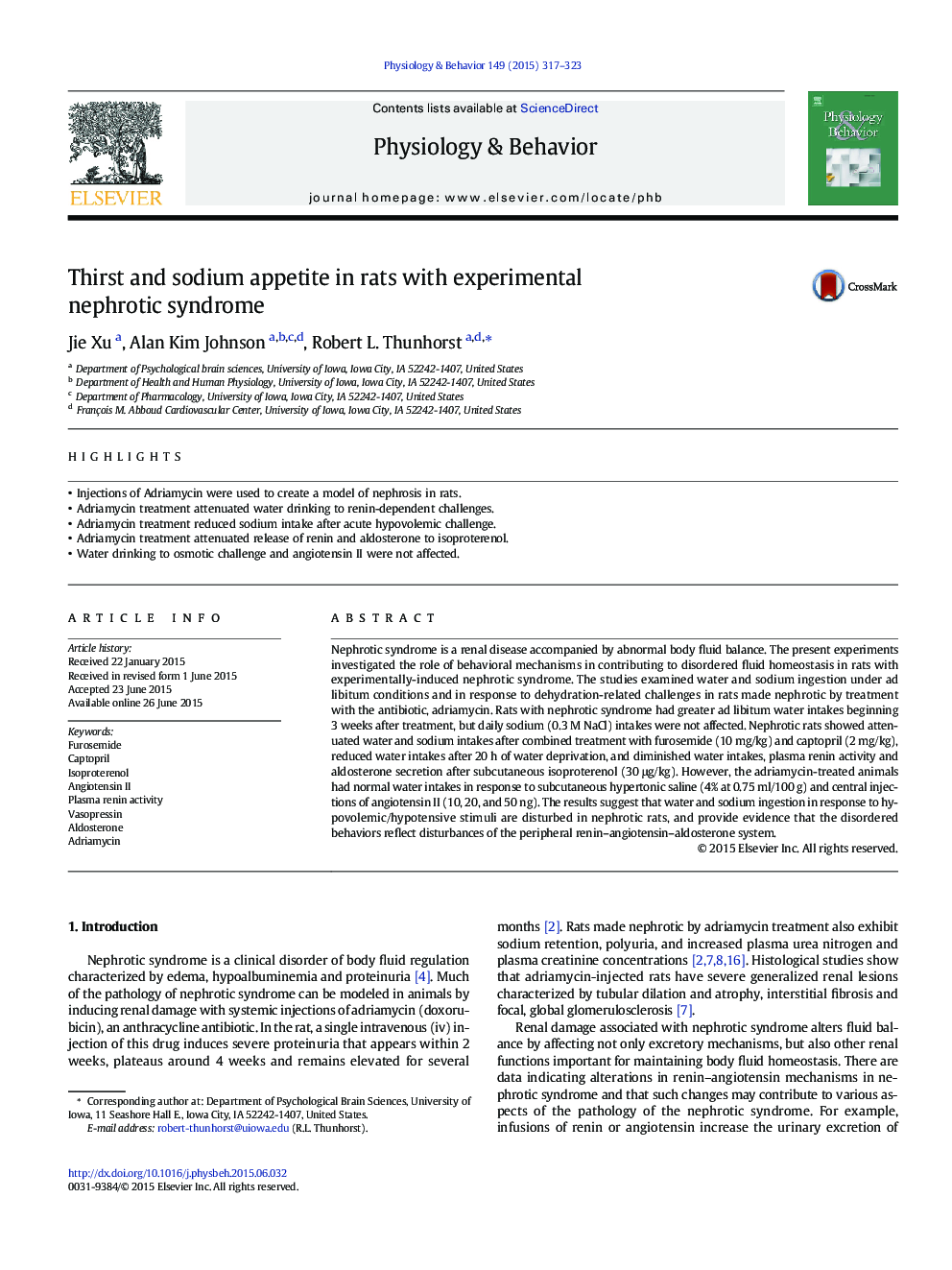| Article ID | Journal | Published Year | Pages | File Type |
|---|---|---|---|---|
| 5923608 | Physiology & Behavior | 2015 | 7 Pages |
â¢Injections of Adriamycin were used to create a model of nephrosis in rats.â¢Adriamycin treatment attenuated water drinking to renin-dependent challenges.â¢Adriamycin treatment reduced sodium intake after acute hypovolemic challenge.â¢Adriamycin treatment attenuated release of renin and aldosterone to isoproterenol.â¢Water drinking to osmotic challenge and angiotensin II were not affected.
Nephrotic syndrome is a renal disease accompanied by abnormal body fluid balance. The present experiments investigated the role of behavioral mechanisms in contributing to disordered fluid homeostasis in rats with experimentally-induced nephrotic syndrome. The studies examined water and sodium ingestion under ad libitum conditions and in response to dehydration-related challenges in rats made nephrotic by treatment with the antibiotic, adriamycin. Rats with nephrotic syndrome had greater ad libitum water intakes beginning 3 weeks after treatment, but daily sodium (0.3 M NaCl) intakes were not affected. Nephrotic rats showed attenuated water and sodium intakes after combined treatment with furosemide (10 mg/kg) and captopril (2 mg/kg), reduced water intakes after 20 h of water deprivation, and diminished water intakes, plasma renin activity and aldosterone secretion after subcutaneous isoproterenol (30 μg/kg). However, the adriamycin-treated animals had normal water intakes in response to subcutaneous hypertonic saline (4% at 0.75 ml/100 g) and central injections of angiotensin II (10, 20, and 50 ng). The results suggest that water and sodium ingestion in response to hypovolemic/hypotensive stimuli are disturbed in nephrotic rats, and provide evidence that the disordered behaviors reflect disturbances of the peripheral renin-angiotensin-aldosterone system.
